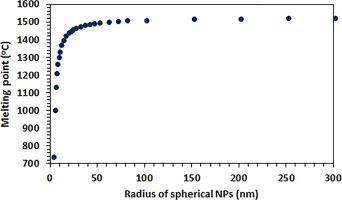Optics & Laser Technology ( IF 4.6 ) Pub Date : 2021-08-29 , DOI: 10.1016/j.optlastec.2021.107467 Marziyeh Sarfehjou 1 , Dariush Souri 1 , Ali Reza Khezripour 1

|
In the present work, undoped ZnSe, and Zn1-x-y Cux Mny Se (x = 0.001, y = 0, 0.001, 0.010 0.015, 0.02 and 0.04 mol) codoped-quantum dots (cdQDs) of mean crystallite size within the range of 1.12 to 1.63 nm are synthesized employing the simple microwave irradiation (MWIR) assisted method; Different synthesis regimes of variable MWIR times and also Mn content are performed for ZnSe:Cu-Mn QDs. Structural, optical properties and melting point of the as-synthesized ZnSe QDs are studied by XRD, FESEM equipped with EDX and Map, TEM, Fourier transform infrared (FTIR) and differential scanning calorimetry (DSC) analysis. XRD confirms the incorporation of Mn and Cu in ZnSe structure with the tunable size by changing the synthesize conditions; TEM results indicate spherical particles, most of which had a diameter of about 5 nm. Results of photoluminescence (PL) investigations show the synthesis condition dependence nature of the samples, suggesting their application in green-region sensors/biosensors; Mn doping causes more extent of PL in to the light wavelengths; doping with transition metals (TMs) impurities and employing MWIR cause an enhancement in the intensity and peak shift of PL band toward higher wavelengths, which influence on the optical properties of semiconductors. The FTIR absorption peaks for the understudied samples show the formation of ZnSe structure (the interaction between Se2− and Zn2+ ions) and insertion of Mn and Cu ions into their lattices; The Experimental and empirical melting temperature of synthesized nanomaterial are investigated; DSC analysis shows that nanoparticles melting point of the present nanoparticles are 600 °C lower than that of the bulk ZnSe owing melting point of 1520–1525 °C. Empirical size dependency of melting point shows that at lower than the Bohr radius of ZnSe (~8 nm), reasonable fast decrease in melting point occurs.
中文翻译:

功能性共掺杂 ZnSe:Cu、Mn 量子点 (QD):微观结构、量热和光致发光特性
在目前的工作中,未掺杂的 ZnSe 和 Zn 1-xy Cu x Mn ySe (x = 0.001, y = 0, 0.001, 0.010 0.015, 0.02 and 0.04 mol) 平均微晶尺寸在 1.12 到 1.63 nm 范围内的共掺杂量子点 (cdQDs) 是使用简单的微波辐射 (MWIR) 合成的方法; 对 ZnSe:Cu-Mn QD 进行了不同的 MWIR 时间和 Mn 含量的不同合成方案。通过 XRD、配备 EDX 和 Map 的 FESEM、TEM、傅里叶变换红外 (FTIR) 和差示扫描量热法 (DSC) 分析来研究合成的 ZnSe QD 的结构、光学性质和熔点。通过改变合成条件,XRD 证实了 Mn 和 Cu 以可调尺寸进入 ZnSe 结构中;TEM 结果表明球形颗粒,其中大部分具有约 5 nm 的直径。光致发光 (PL) 研究结果显示样品的合成条件依赖性,表明它们在绿色区域传感器/生物传感器中的应用;Mn 掺杂导致更多的 PL 进入光波长;掺杂过渡金属 (TMs) 杂质并采用 MWIR 会导致 PL 波段的强度和峰向更高的波长偏移,从而影响半导体的光学特性。未研究样品的 FTIR 吸收峰显示了 ZnSe 结构的形成(Se 掺杂过渡金属 (TMs) 杂质并采用 MWIR 会导致 PL 波段的强度和峰向更高的波长偏移,从而影响半导体的光学特性。未研究样品的 FTIR 吸收峰显示了 ZnSe 结构的形成(Se 掺杂过渡金属 (TMs) 杂质并采用 MWIR 会导致 PL 波段的强度和峰向更高的波长偏移,从而影响半导体的光学特性。未研究样品的 FTIR 吸收峰显示了 ZnSe 结构的形成(Se2−和 Zn 2+离子)以及将 Mn 和 Cu 离子插入到它们的晶格中;研究了合成纳米材料的实验和经验熔化温度;DSC 分析表明,由于熔点为 1520-1525°C,本发明纳米粒子的熔点比本体 ZnSe 的熔点低 600°C。熔点的经验尺寸依赖性表明,在低于 ZnSe 的玻尔半径(~8 nm)时,熔点会出现合理的快速下降。











































 京公网安备 11010802027423号
京公网安备 11010802027423号